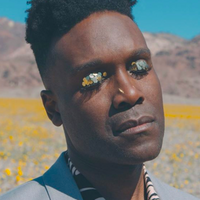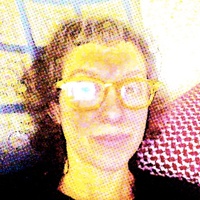On adapting your practice in difficult times
Prelude
Anne Marika Verploegh Chassé is a shoemaker, artist, and educator from Switzerland and the Netherlands. In her Brooklyn atelier STIEFELwerk – meaning “bootwork” – she designs and builds made-to-measure footwear for individual clients, employing traditional techniques and skills. Fascinated by the physicality of the making process, and the challenge of combining design, math, ergonomics, and artistry, AMVC has worked with skilled master-craftsmen all over the world to learn the craft. In addition to her atelier work she teaches footwear design and construction at Rhode Island School of Design and Fashion Institute of Technology.
Conversation
On adapting your practice in difficult times
Shoemaker and artisan Anne Marika Verploegh Chassé on how she learned to make shoes, teaching hands-on creative practices in the virtual realm, and how she's coped with losing her workspace in the middle of a pandemic.
As told to T. Cole Rachel, 3458 words.
Tags: Art, Design, Inspiration, Process, Adversity, Beginnings, Anxiety.
You have a very specialized kind of creative practice. How did you even start to learn to do this?
Well, when I moved from Switzerland 20 years ago I wanted to do painting and illustration. I did that for a while, I was in a few group shows, and it was kind of fun, but something was missing. I had this relationship that I got out of and I was just exploring new things. I was living in this loft in Bushwick with two other roommates, and one of the roommates had this girlfriend, and one day she said, “Hey, I saw this course and I thought about you,” and she handed me this flyer. It was for a course about making shoes at the Jewish community center uptown. I was so poor at the time, I was on a one bagel a day kind of diet, but I was still like, “That sounds cool.” I was just looking for something different. And I’ve always been a maker. I’ve always been interested in handmade things.
I grew up in Switzerland, my mom is very fashionable. She’s now 75. And she’s still very fashionable, and she always loved Italian designers. When I was growing up, she and my dad did very well for themselves, so she would come home with these crazy turbans and capes, very ’70s stuff. She’s not as wild anymore now, but she’s definitely still very fashionable. So I grew up around beautiful things, but we were never the kind of people to just buy things and toss them. So when I saw that course I was like, “Ooh, shoes! You can always wear a nice pair of shoes or boots.” Personally, I really love boots. If you wear a great pair of boots, it doesn’t really matter what else you wear, because you’re standing in something good and it makes you feel good. It changes the way you walk. It influences your whole person. I always thought that. So I decided to try and learn how to make them.
That original class was more like a hobby course, but the teacher was really fun. So I started with that, and then I realized that all the things that interest me, the things that fascinate me or have always fascinated me, just kind of came together. I quickly decided — I really want to do this. I met this woman who was interested in the same thing. One day we just took the subway together and she was like, “Well, I just found these people in England. They’re just doing their first course in hand-sewn shoes, and you could come with me if you wanted, my friends have extra room.” At the time I had just committed to an office job to make some extra money, so I couldn’t go. But when she came back I checked in with her and she said she really loved it. It was great. So I saved up money and went the next year, and that’s how I started my journey of really pursuing making shoes.
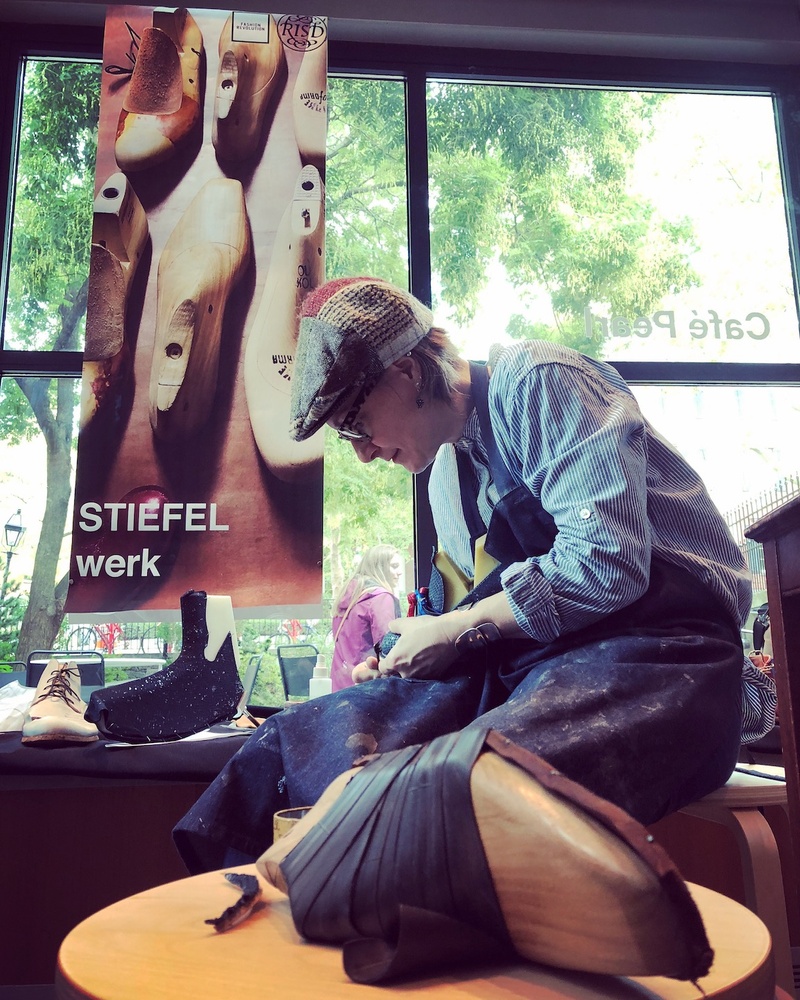
I started out with making just a few pairs for myself. Eventually friends would buy the materials and I would make shoes for them, just to kind of learn how to make different designs, and explore making for other people. I found that experience to be super fascinating because you are making something functional that also makes people feel really special. Also, it’s a fact that around 50% of us don’t actually fit into average shoe shapes or sizes and that many people are walking around in shoes that don’t actually fit their feet. So I became more curious as I went on and realized that it was something I really wanted to do.
I love learning, so I’m still going to visit other makers. We call it shoe-cation in the trade, because I’m not alone, there’s a few other makers that are like me, who started out on their own, and were looking for other people to work with. I didn’t have a traditional apprenticeship, but I sought out other people to learn from. I went and learned how to make cowboy boots out in the West, for example. All these different things eventually allowed me to be my own maker, choose my own path and figure out what I wanted to do with it, rather than when you go and work with one person exclusively, and then you might just only do that kind of style. It might take you a while to kind of find your own thing. So I kind of worked with all these different people, learned all these different techniques, and now I can playfully adapt them to my own style.
Is that how most people do it? Do most people do apprenticeships? Or do people go somewhere like FIT and just specialize in shoes?
I think most students who might think, “I want to go into footwear,” usually go into footwear design or accessory design. So you go to a school and you do the certificate. That’s one way, and then you work for a big company, probably doing sneakers, because that’s a huge market. The real money is in corporate design work - like Nike or United Nude - or for huge brands like Walmart. Also, athleisure is one of the fastest growing markets for footwear.There is always a need for designers in that world. For other kinds of shoe making, it’s a little harder.
When I started there were no YouTube channels with shoemaking or bag making or anything, so we kind of had to make it up ourselves and go find people to work with. But now, because of the “makers” movement, there are more resources. There has been a resurgence around shoemaking and boot making the last few years. There are lots of people who really want to make things by hand. For a while it seemed like a lot of the really old-school shoe makers didn’t want to share their trade, because it was creating competition for them, but then they realized that if they’re not going to share their skills, it’s just going to die out.
There are a few really well-known western boot makers that started to take on apprentices, and a lot of them are women, which is really encouraging and cool. My friend Lisa Sorrell has been making boots for many well-known characters (like Arnold Schwarzenegger) and is very successful. The appeal of this kind of work really is that you are working with your hands and not necessarily because you’re gonna make a lot of money. If you want to buy a condo or something, you might have to study sneaker design and go work for big companies. But if you love to work physically and your American dream is different than for the average person, if you see success in different terms, then this could definitely be a career for you.
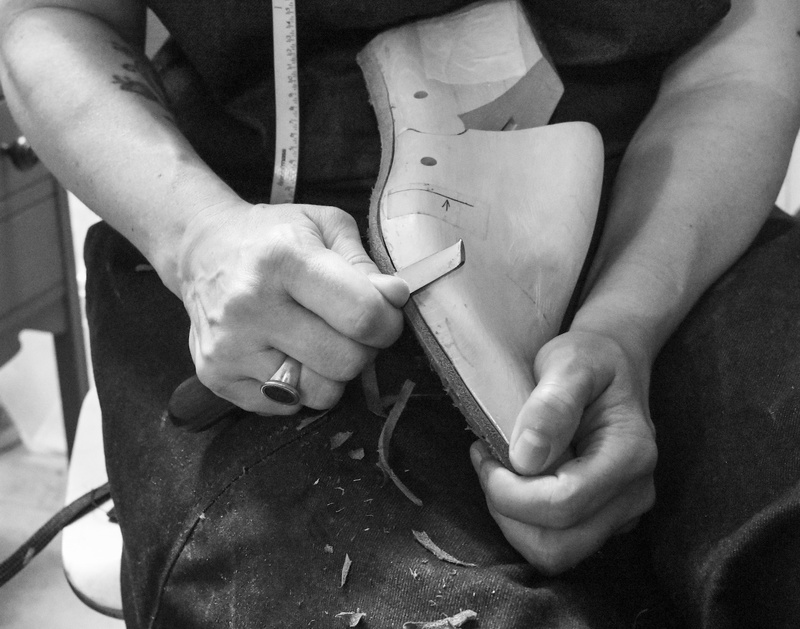
How do you make money as a shoe maker?
What I learned from the old geezers is that the more you specialize and have your niche, the more successful you are. I have a sort of portfolio career, where I do many different things. It’s all shoes and footwear, but in order to make a living, I make shoes and boots for individual clients, but I also do work for Broadway. I’m just starting to make shoes for costumes, but I’ve also been doing repair work on pointe shoes. And then I teach, sometimes I write things, sometimes I do consulting.
So there are all these different things, and sometimes I have one-on-one students in my studio, too. And that’s what I hear from all those people that I met in the U.K. that have been doing it for like 50 years — you have to do a little bit of everything. I think you can really successfully do cowboy boots in the States, especially If you’re in a place like Texas or something, and because people really spend money on that. And there’s a tradition in it. So you can definitely do business like that, but for regular shoes and boots, work boots or whatever, and if you want to do the hand-sewn stuff yourself, it just takes time. It takes a while to build a clientele.
For a person who might want to learn how to make shoes — even just as a hobby — where would you suggest they start?
Well, I always ask where do they want to end up? If they want to go work for a big company, I would say go and get a certificate at FIT or another program like that. If they want to work for big companies but also want to do hand making, I’d do the same thing. I say go find a program, do that, and then while you’re working for a bigger company maybe find somebody who can teach you more about the hand making. And if they just really want to do hand-sewn shoes, or start their own line, I always recommend finding somebody to apprentice under. A lot of people come to my studio and they kind of have this romantic idea of being in a little basement making shoes. What they don’t realize is that being an entrepreneur is very hard. There are all these other things that you have to do as well.
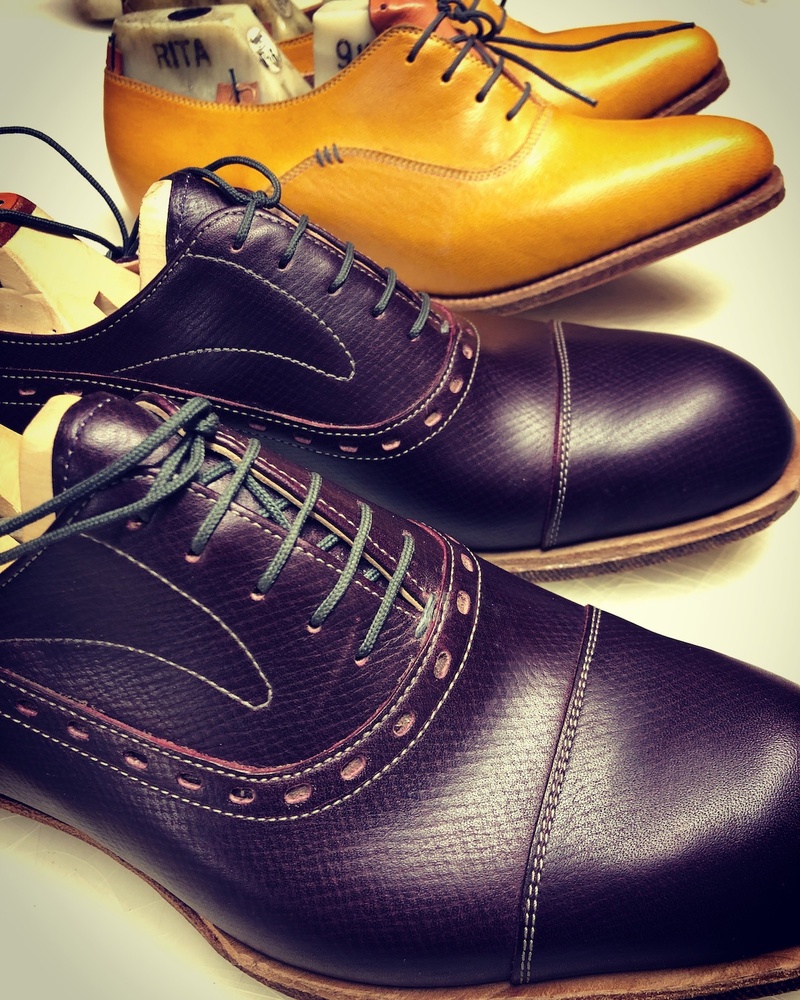
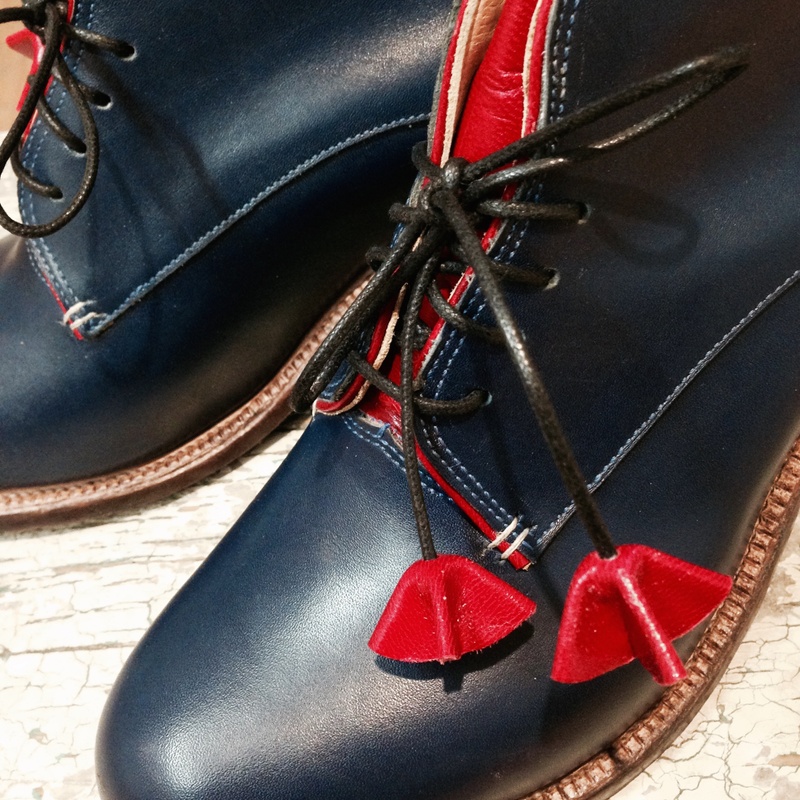
It’s very physical work and it’s very hard, so if you really want to do that, you should just maybe go find somebody you can work with for a week or two, full on, and really get a feel for what it is like to work with your hands. Then see if you still think the same thing. I’ve had people come work with me for short periods of time. Or you could do like I did, where you go and find these different people and do these short, intense one-on-one apprenticeships. If you can move and pick up your life and go somewhere to learn, I would do that. I think we get discouraged to do that these days, especially here in the U.S. We become trapped in one job. Many of us work seven days a week. You don’t take time for yourself, or for your friends, or for your partner. I think that’s really important. Doing something you enjoy is important, but even that doesn’t matter if you are working yourself into the ground.
How are you managing to teach right now during this pandemic?
I’m teaching — or at least attempting to teach — online at Parsons right now. It’s been challenging because most of the students don’t have the materials they need and I’m trying to teach them very “hands on” skills through a computer screen. They don’t have access to the workshops or the equipment. Also, some of them are quarantined in hotel rooms in China, not even in the same towns as their families. They are stuck in rooms with only toilet paper or tissue to play around with as their material and they’ll have to be there for at least two weeks, if not longer. So, to figure out a way to still teach them, I’ve been playing with lemon prints, potato block printing, vegetable dyeing, spice dyeing from the spice cabinet. Because a lot of them, they don’t even have any sketching materials with them, or any colors.
I saw some of the pictures you posted of the spice dyeing with paper towels. It looked cool.
Yeah, you can get super intense colors from just using very commonly available spices. Paper towel is not so bad, because it is stronger than regular paper, so you can also embroider on it. I’ve been experimenting with overlays and cut outs, just seeing how it works and how I can use it with my students. My house smells like a spice cabinet right now. In moments like this, you just have to get creative. In fact, sometimes in moments like this you see true creativity blossom, simply out of necessity.
If you are teaching people practical skills that involve hand-making things, you really do have to improvise.
Absolutely. Some of the students are kind of creatively paralyzed and also totally disappointed because they were planning on making all of these things. For the senior fashion students, most of them were planning on doing a big collection, and they’ve been planning for this for two years, ramping up to their senior show and doing all these amazing things. And now suddenly you can’t really do any of that stuff. How do they get the recognition that they were trying to achieve? How are they supposed to think about getting a job after school ends? All these things that we just took for granted are just gone now, so how do we even think about that? The students are disappointed and anxious, obviously.
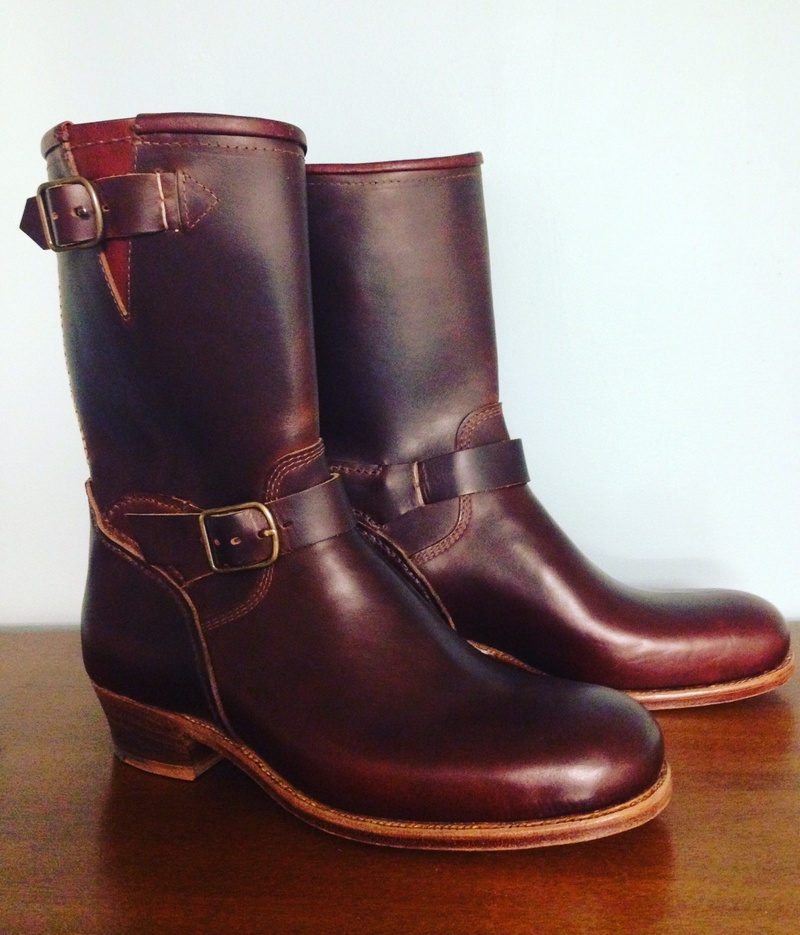
And then, we grown people — teachers like me — we are feeling the same thing, because a lot of us certainly don’t have the same income we did before. You don’t know if you can pay rent or buy food, all these crazy things. As long as all the little wheels are turning, you don’t really think about that stuff, that you don’t have any savings because you’re an artist, or because you’re not a lawyer or something. And now the whole thing, I see it as a squashed pineapple on the sidewalk, where you can just see all the layers, all the insides spread out. You can see how broken and fragile this entire system we’ve been working in really is.
I know that in the midst of all this chaos, you also lost your studio space. This is another thing that a lot of artists are facing right now.
Yes. It’s extra tricky in a city like NYC because so many of us artists are not really in super legal situations. You might share a studio, you might not have a lease, you might be informally subletting from a friend. I was subletting from a friend who had a clothing shop with a basement. The owner sold the building and it was clear that we would have to be out at the end of August, because that’s when her lease ends. The owner knew that I was there in the basement. He’s stood in my studio, he’s commented on how cool this is to have an artisan in the building. It’s not like I sneaked in illegally and worked there for four years. It was absolutely clear that I was in there. And then suddenly, because they haven’t closed on the building yet and because my friend could no longer pay the rent because of everything that has happened, I was aggressively told that I needed to get out immediately.
Like so many people who tried to get one of those immediate small business loans, my friend was unable to get anything at all. She had to let go of her employee. She didn’t get anything. A lot of people didn’t get anything. The whole system crashed. And so suddenly, our landlord was like, “Well, Marika needs to go out. She’s there illegally.” I’m sure a lot of people have had similar situations where you personally don’t have a lease, you’re somewhere in limbo, and also suddenly you don’t have any income to pay your rent.
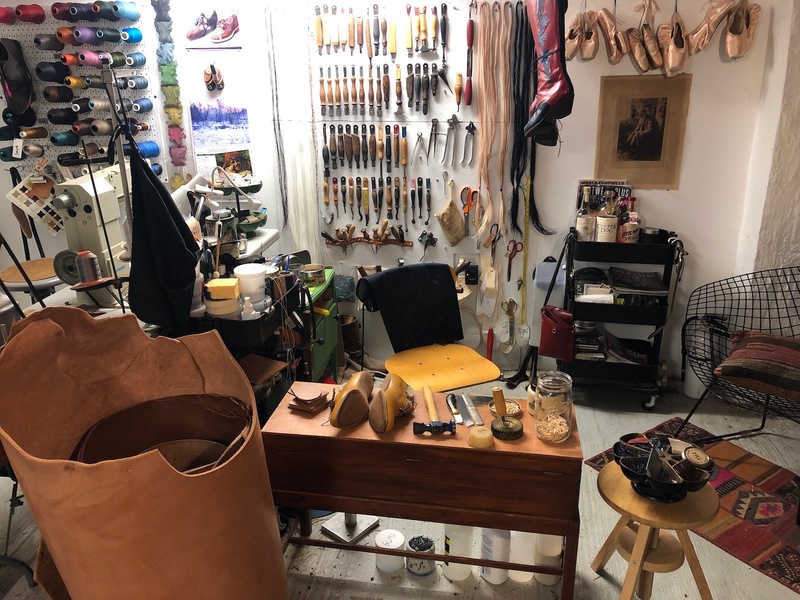
So what did you do?
At first I was super annoyed and upset. I didn’t have any recourse. Then I decided to move the essentials from my studio into my apartment, and basically do what a lot of artists have had to do in the last few years — move their studios into their living space. I have friends who did big-scale things and now they’re doing small-scale things, because they can work from home. So since I can technically make shoes without all of my machinery, I can leave my big things there. Legally no one can be evicted anywhere at the moment for 90 days - there might even be an extension due to the current situation, because it doesn’t seem like this thing is really slowing down. So, at the moment I’m bringing everything else that I can home with me.
I’ll need to look for storage, because there’s no way for me to find a studio space right now. I also don’t want to put anybody in peril of getting sick because I’ll need help to move things. I don’t have a driver’s license, so I can’t just rent a truck to do it. Some of the machines that I have are too heavy for me, so I would have to hire at least two specialists to bring my finishing machine out of the basement. It’s just a big mess. At first it was like, “Oh my God.” Then I was like, there’s really no use for me to go crazy, and I know I’m in the right. I’m basically leaving my machinery there, but I’m just working on my things at home so I don’t have to go there. I know I’m not the only one experiencing hardship right now and I know that a lot of people have it much worse, so I just have to do the best I can. Basically, I’m doing what I did 15 years ago — running a little cottage industry out of my living room. Being as creative as I can be with what I have.
It’s wild. So many creative folks are scrambling right now to figure out a way to still do their work.
Like I said, I know I’m luckier than a lot of people. Right now as I’m talking to you, I’m sitting in my little backyard behind our building. The plants are growing, the birds are chirping, there’s a little sunlight. It feels like spring. I’m just like, wow, this is totally surreal. It’s a beautiful day and the entire world is in chaos. I’m just grateful that I can figure out a way to keep teaching. Right now it’s saving my life. If I didn’t have that, I wouldn’t be able to pay rent, I wouldn’t be able to buy food. If I didn’t have that income, I would be so terribly fucked. I have so many friends with successful small neighborhood businesses, like bars & restaurants, that had to shut down. Friends with small kids who are now stuck at home in a tiny apartment. I’m lucky I have a backyard. It’s an old apartment, and things are falling apart, but at least I have some room.
At a time when everything is so uncertain, it’s those little things — like having a spot where you can just sit outside in the sun —that really start to matter.
Yes. I’m still worried about getting sick, but I’m more concerned about the bigger situation and what it means for our society and for artists and regular people, and the future. I also have some hope that this moment might really change some of our perceptions on how we see life and what we value as important. I think it’s done that for me and also for a lot of other people, so I hope that’s something that lasts.
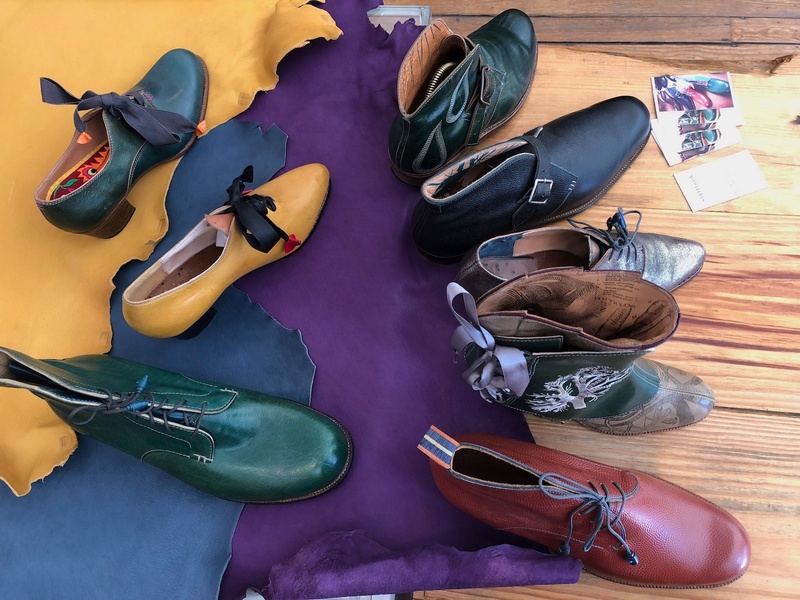
Anne Marika Verploegh Chassé Recommends:
-Last amazing dinner : Oxalis - menu dégustation - A fabulous experience. Awesome non-alcoholic beverage pairings!
-
Last Favorite Book I read : A gentleman in Moscow by Amor Towles
-
A place to visit : My hometown of Bern - the capital of Switzerland - especially fab on an early morning run through the old part of town, surrounded by ghosts of lives past. It’s origins go back to the 12th century.
-
Latest music obsession : Etta James - At Last
-
I’m looking forward to seeing this show about the art of boro textiles
- Name
- Anne Marika Verploegh Chassé
- Vocation
- Bespoke Shoemaker, Teacher
Some Things
Pagination
